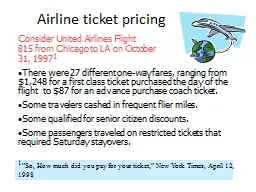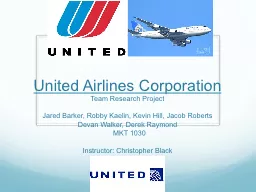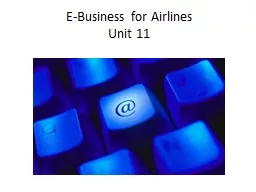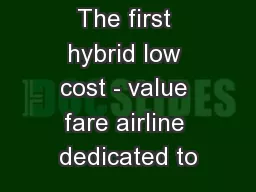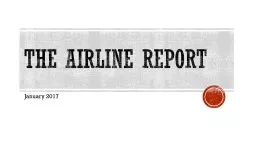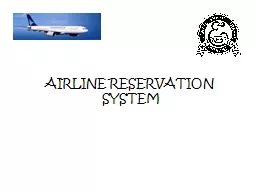PPT-Airline ticket pricing Consider United Airlines Flight
Author : stefany-barnette | Published Date : 2018-11-07
815 from Chicago to LA on October 31 1997 1 There were 27 different oneway fares ranging from 1248 for a first class ticket purchased the day of the flight to 87
Presentation Embed Code
Download Presentation
Download Presentation The PPT/PDF document "Airline ticket pricing Consider United A..." is the property of its rightful owner. Permission is granted to download and print the materials on this website for personal, non-commercial use only, and to display it on your personal computer provided you do not modify the materials and that you retain all copyright notices contained in the materials. By downloading content from our website, you accept the terms of this agreement.
Airline ticket pricing Consider United Airlines Flight: Transcript
Download Rules Of Document
"Airline ticket pricing Consider United Airlines Flight"The content belongs to its owner. You may download and print it for personal use, without modification, and keep all copyright notices. By downloading, you agree to these terms.
Related Documents

